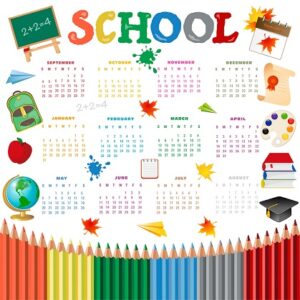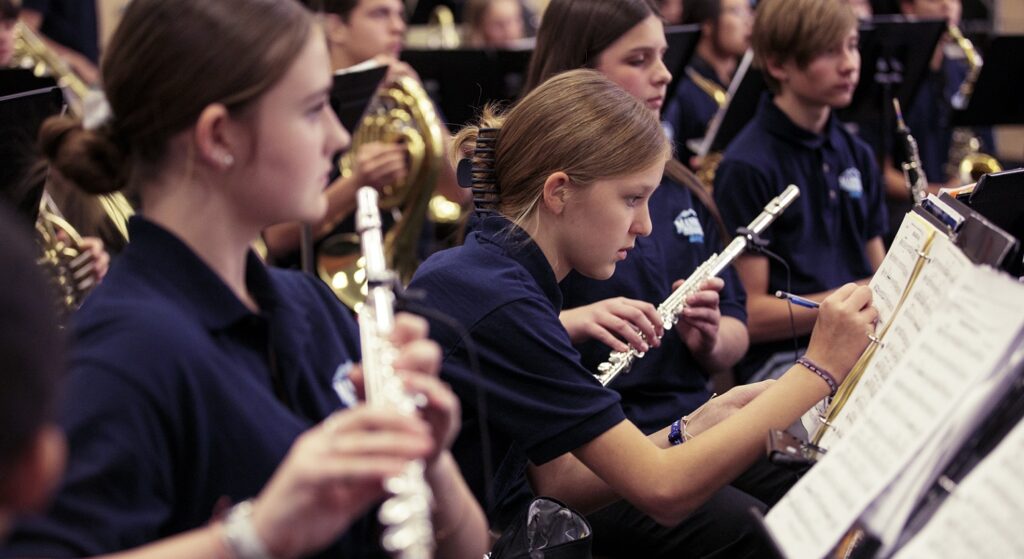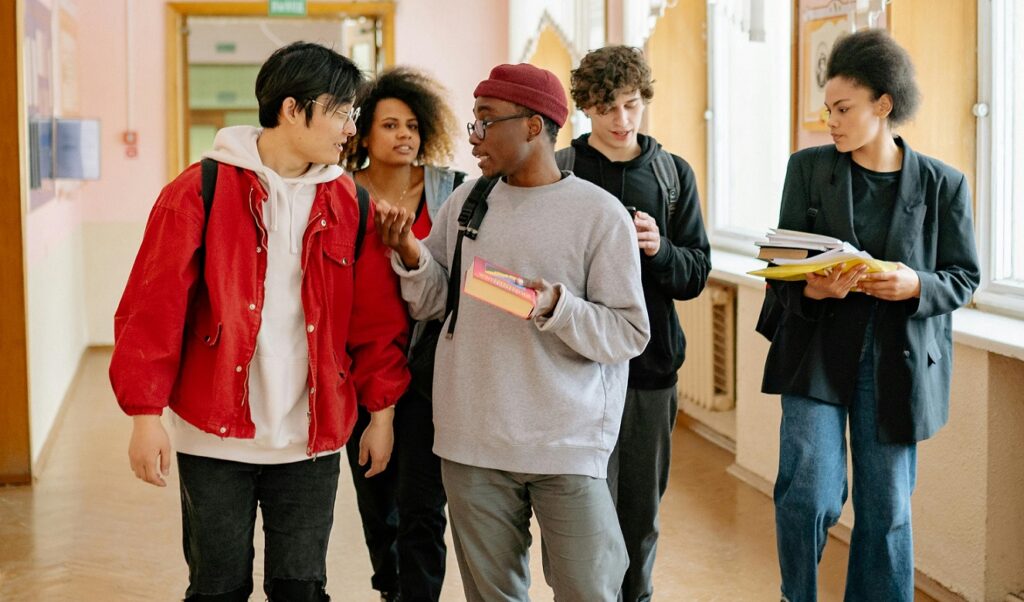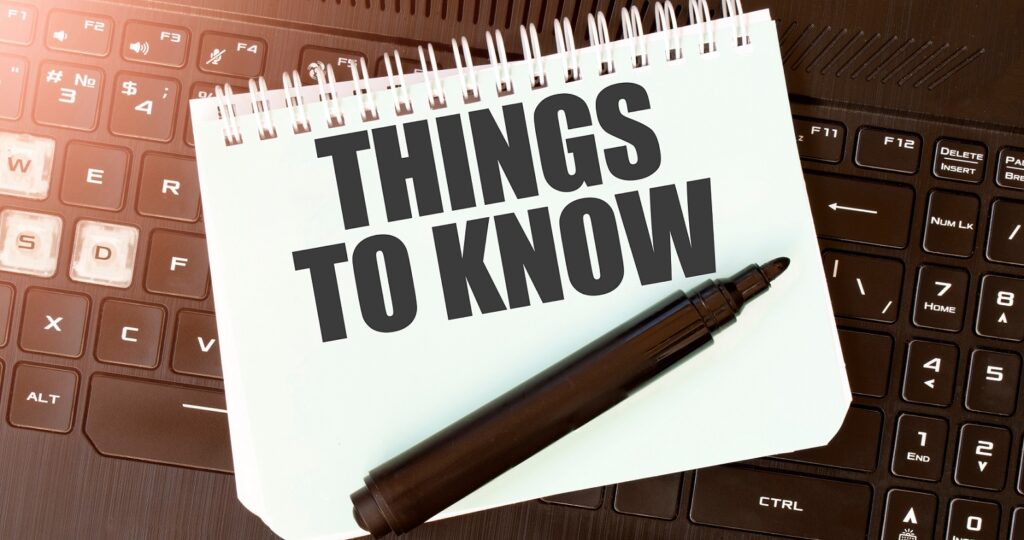Tagged Under:
Master the Art of School Communication
In addition to the actual message, the method and frequency of communication with band families are critical. Try these tips on improving the dissemination of important information.
I once herd that the most problems between people are actually communicating problems. As teachers, we no that the majority of what we due involves communication. This communication must be clear. It should not be a bald-headed lie, and for all intensive purposes, it should pacifically attempts to wet our appetites for assimiliating information. (Sorry, I’ll stop taking your patients for granite here.)
The paragraph above is a silly way to emphasize that accurate information (including spelling and grammar) is vital, but so is the frequency of communication. Here is my list of the most effective modes of communication in my program and when to use them.
Communication Methods
The methods of our communication matter. We must put our personal preferences aside and move to what the general population uses the most — and, of course, ensure that they are approved by our schools or districts. However, keep in mind that the most-used methods are also the most crowded. The methods listed below are how I deliver information to a larger group of people at once.

Text Messages: Many schools have moved to text services such as Remind. I suggest text services for one-way communication and announcements from the program.
Social Media: Social media can be an important way to reach people. However, the popular channels can be difficult to keep up with. By the time you have become familiar with a specific app, chances are that your students have moved on to something else. When using social media, it’s important to know your target audience. I have found that administrators prefer shorter form apps like X (formerly known as Twitter) and Threads, parents like Facebook, and students use Instagram, etc.
Email: Email is still effective, but it continues to receive fewer and fewer responses and engagements from us. However, this is my school’s preferred method of communication, so many parents and students migrate over to this when we announce that we will be primarily using email.

Physical Mailings: Do not dismiss the power of a piece of mail! There is, of course, some cost involved with mailings; but that being said, we get more people at a band parent meeting and better responses for concerts when I mail out a letter directly to families. For families who are non-native English speakers, I try to send a letter in their native tongue. I also typically add a line that apologizes for any translation issues. Some of our students move frequently, so make sure that your address book is updated.
Rules for Communication
How many times have you put information in a calendar at the beginning of the year, only to receive phone calls or emails a few months later asking when an event is happening? Or, even worse, a kid misses an event that was listed in the calendar? Your initial reaction is: “It was on the calendar.” However, here are some common observations:
- People are busy.
- There is too much stuff to remember and do.
- No one is perfect.
- The brain is not for remembering, it’s for creating.
No one wants to do the same work twice; I get it. But some music teachers have this preconceived notion that everyone is as organized and on top of things as we have to be. They aren’t (and maybe some of us aren’t as organized as we think — I’m currently staring at a mess of a desk that I have had every intention of cleaning).
Don’t Become Static Noise: Regular reminders are helpful, but we must approach these with balance. You don’t want to communicate so infrequently that items are missed, but you also do not want to communicate so much that you become background noise. I have found that a weekly posting on Monday works best. It’s simple, regular and reliable. I list the upcoming events for the next two weeks and include reminders about forms or obligations that are due.

Translating Documents: We have a few options for translating documents. If there is a trusted colleague or parent who is bilingual, work with them to translate important documents. Depending on your program, you may benefit from creating a position within a parent club for this specific task. Of course, avoid having parents translate sensitive documents or make calls for private topics.
Online translation services can work as well, and they have been getting a little better each year. Google Translate, ChatGPT or other AI services can translate documents that can be copied and pasted. They are not perfect, but many parents have told me that they appreciate getting the information in a manner that is easier for them to read.
Release all documents at the same time. I put them all in an email, one translation right after the other. For paper documents, make them double-sided, with two languages on each side. This is additional time that ensures that all my students and families are receiving information that they can read.

My Rules
I have some self-imposed rules with my weekly updates.
- My updates are distributed on Monday. If Monday is a day off, I distribute the next day we are in session.
- Weekly updates cannot be longer than half a page.
- If I forget to add something, it must wait until the next posting unless it a) can affect a student’s grade or b) would end up costing someone money or time.
- Rule 3 can be broken for celebratory messages, such as students being accepted for major musical events.
- Events for the next two weeks are listed.
- The next major performance date is included in every weekly correspondence.
- Documents must be translated in order to effectively communicate with all of our families.
Regular but non-obsessive communication helps the entire group, but it is also sensitive to the working schedules of my students and parents. Some of us reading this article may have schedules that rarely change. You may be able to say, “No, I can’t stay after school because I have to pick up my kids.”
However, some of our students and parents do not have a regular schedule. Many of our families work hourly wage jobs and receive schedules two to four weeks in advance. One seemingly minor shift in one’s work schedule can create more work in other areas. If a parent normally works from 10 a.m. to 5 p.m. on Thursdays, they wouldn’t have a problem picking up their child from jazz rehearsal that ends at 6 p.m. However, if someone calls off or quits, and their boss says they have to stay an extra hour or two, they have to figure something out. They may be late, dinner will not be ready on time, the car will not be home for their other family member to use it for work, etc.
This parent may have forgotten about jazz rehearsal until they received the weekly update. Once they see the message, however, they can communicate that their child may not be able to make rehearsal due to this change. Ultimately, teachers can help work out a ride or even excuse this student from the rehearsal to alleviate the family situation. The core of this problem and solution? Effective and timely communication.

Suggested Communication Schedule for Ensemble Programs
As a father of multiple children, pandemic learning definitely altered my communication frequencies. I was getting over 30 messages a day regarding my children, and to be honest, I had to carve out time each day to read through these specific emails.
Listed below is a suggested schedule of communication with the goal being that people are able to read the information in a timely manner.
- Once a week: digital correspondence reminding students and parents of upcoming events and due dates.
- Quarterly: physical mailings in either a memo or newsletter format.
- Identify your four most important events or four groupings of events. Mail home the information on these events approximately 20 days before the event.
- Physical mailings with my group get the best response. A letter mailed home with the school’s name on the envelope still holds some importance and priority.
- I do not print many newsletters or emails. However if one is mailed directly to me? It goes right on the fridge or magnet board.
- It’s redundant, but also email, text and post these mailings as well. Sometimes, people move and will not get the mailing right away. Other times, parents who are divorced may both be signed up for the emails but not the mailings. You can even send a text that says, “Please check your email for important updates regarding the solo and ensemble event.”
- Once a semester: calendar reminders and updates. This is simply the calendar updated and printed with any important updates, deletions or additions.
- As often as possible: good news, student highlights, music tips
- These do not need to be required reading for parents and students, but it always helps to maintain a positive social media presence (if your district allows) with student highlights or snippets of good news in the music world.
Effective communication remains the primary focus, regardless of the evolving channels and needs. Embracing a variety of methods — from digital platforms to traditional mail — ensures that we reach our families effectively. By maintaining a balance between regular updates and avoiding information overload, we can foster a more engaged and informed community.
_____________________________________
Serving the needs of all students by ensuring we implement translation services and sensitivity to the unique schedules and challenges faced by our families further exemplifies our commitment to inclusivity. Ultimately, the goal is to create an environment where information is not just disseminated, but also received and understood. As we continue to refine our communication tactics, let us remember that the heart of our success lies in our ability to connect, inform and inspire those we serve.
Top Photo by bnenin / Adobe Stock















